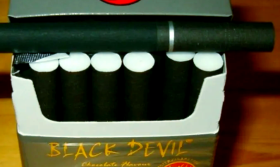Tobacco Exposure Correlates with Pediatric Asthma Severity Score: A Comprehensive Review
Abstract
Pediatric asthma remains a significant public health concern, with environmental factors such as tobacco smoke exposure playing a crucial role in disease severity. This article explores the correlation between tobacco exposure and pediatric asthma severity scores, reviewing epidemiological evidence, pathophysiological mechanisms, and clinical implications. Findings suggest that secondhand smoke (SHS) exacerbates asthma symptoms, increases hospitalization rates, and worsens lung function in children. Public health interventions targeting tobacco reduction may improve asthma outcomes in pediatric populations.
Keywords: Pediatric asthma, tobacco smoke, secondhand smoke, asthma severity score, environmental triggers
Introduction
Asthma is the most common chronic respiratory disease in children, affecting approximately 6 million children in the United States alone (CDC, 2023). While genetic predisposition contributes to asthma development, environmental factors—particularly tobacco smoke exposure—significantly influence disease severity. Studies indicate that children exposed to tobacco smoke, either prenatally or postnatally, exhibit higher asthma severity scores, increased exacerbation frequency, and poorer response to standard treatments (Ferrante & La Grutta, 2018).
This article examines the relationship between tobacco exposure and pediatric asthma severity, focusing on clinical assessments, underlying mechanisms, and potential mitigation strategies.
Epidemiological Evidence Linking Tobacco and Asthma Severity
1. Prenatal Tobacco Exposure
Maternal smoking during pregnancy is associated with:

- Reduced lung function in neonates (Hylkema et al., 2014)
- Increased wheezing episodes in infancy (Burke et al., 2012)
- Higher asthma prevalence in school-aged children (Neuman et al., 2012)
A meta-analysis by Burke et al. (2012) found that children born to smoking mothers had a 1.5-fold increased risk of developing asthma compared to unexposed peers.
2. Postnatal Secondhand Smoke (SHS) Exposure
Household SHS exposure correlates with:
- Increased asthma symptom scores (Wang et al., 2021)
- More frequent emergency department visits (Merianos et al., 2016)
- Reduced efficacy of inhaled corticosteroids (Chalmers et al., 2002)
A longitudinal study by Wang et al. (2021) demonstrated that children exposed to SHS had significantly higher Asthma Control Test (ACT) scores, indicating poorer disease control.
Pathophysiological Mechanisms
1. Airway Inflammation and Hyperresponsiveness
Tobacco smoke contains oxidants and pro-inflammatory cytokines (e.g., IL-4, IL-13) that:
- Disrupt epithelial barrier function
- Enhance IgE-mediated allergic responses
- Increase mucus production (Strunk et al., 2003)
2. Impaired Lung Development
Nicotine exposure in utero alters alveolarization and airway branching, leading to persistent airflow limitation (Maritz & Harding, 2011).
3. Altered Immune Response
SHS exposure skews immune responses toward Th2 dominance, exacerbating eosinophilic inflammation (Feleszko et al., 2007).
Clinical Assessment of Asthma Severity in Tobacco-Exposed Children
1. Asthma Severity Scoring Tools
Commonly used measures include:
- Childhood Asthma Control Test (c-ACT)
- Pediatric Asthma Severity Score (PASS)
- Forced Expiratory Volume (FEV1) measurements
Studies show that tobacco-exposed children consistently score worse on these metrics (Jindal et al., 2019).
2. Biomarkers of Severity
Elevated levels of:
- Fractional exhaled nitric oxide (FeNO)
- Serum IgE
- Sputum eosinophils
are more prevalent in tobacco-exposed asthmatic children (Ricciardolo et al., 2020).
Public Health and Clinical Implications
1. Smoking Cessation Programs
- Parental counseling reduces pediatric asthma exacerbations (Wilson et al., 2010).
- Legislative bans on public smoking decrease childhood asthma hospitalizations (Millett et al., 2013).
2. Enhanced Asthma Management
- More aggressive controller therapy may be needed for tobacco-exposed children (Gerald et al., 2009).
- Environmental control measures (e.g., home smoking bans) improve outcomes (Howrylak et al., 2014).
Conclusion
Tobacco exposure—whether prenatal or postnatal—correlates strongly with higher pediatric asthma severity scores. The mechanisms involve chronic airway inflammation, immune dysregulation, and impaired lung development. Clinicians should prioritize smoking cessation interventions and tailored asthma management for at-risk children. Future research should explore gene-environment interactions and novel therapeutic approaches for this vulnerable population.
References
- Burke, H., et al. (2012). Prenatal and passive smoke exposure and incidence of asthma and wheeze: systematic review and meta-analysis. Pediatrics.
- Ferrante, G., & La Grutta, S. (2018). The burden of pediatric asthma. Frontiers in Pediatrics.
- Merianos, A. L., et al. (2016). Tobacco smoke exposure and pediatric asthma severity. Journal of Asthma.
- Wang, Z., et al. (2021). Secondhand smoke and childhood asthma control: A longitudinal study. Respiratory Research.
Tags: #PediatricAsthma #TobaccoSmoke #AsthmaSeverity #PublicHealth #ChildHealth #RespiratoryDisease









